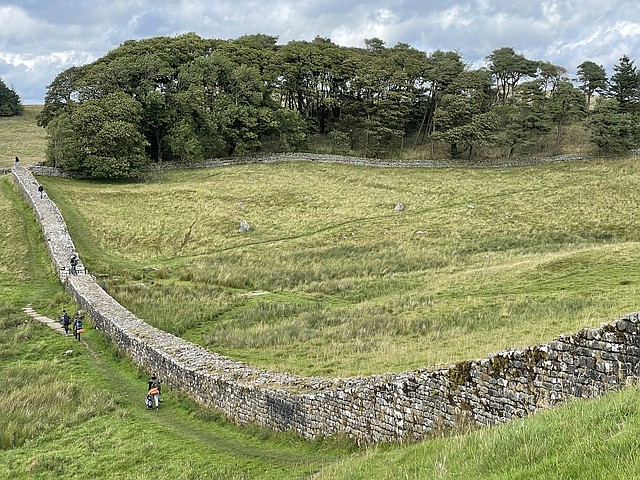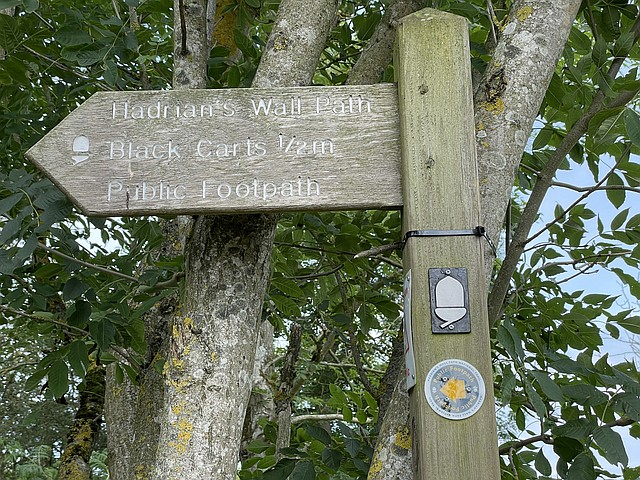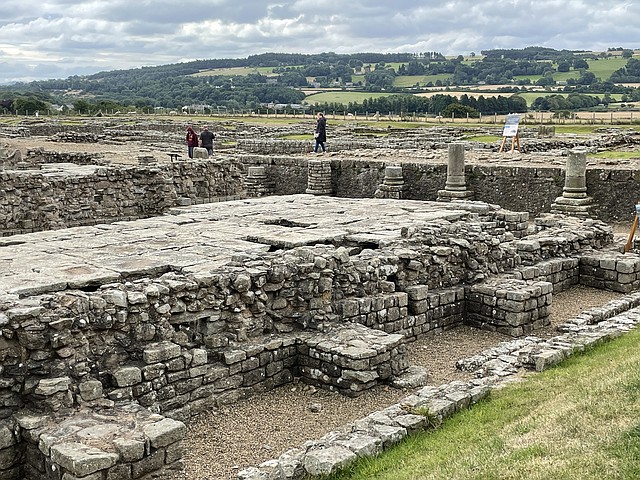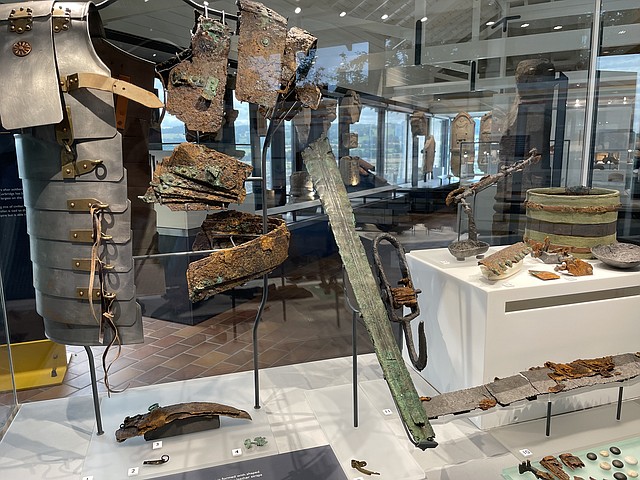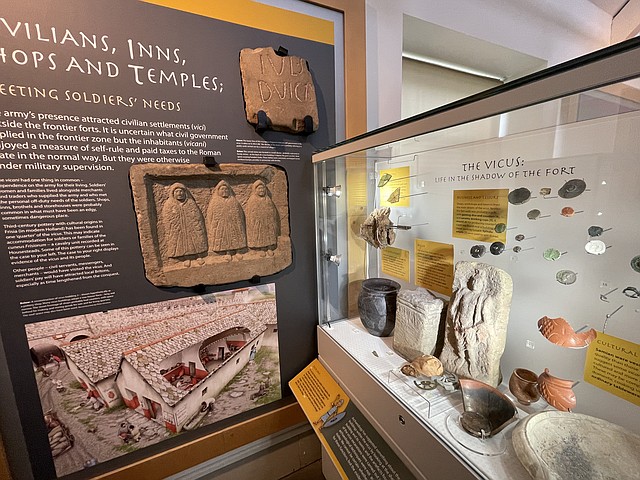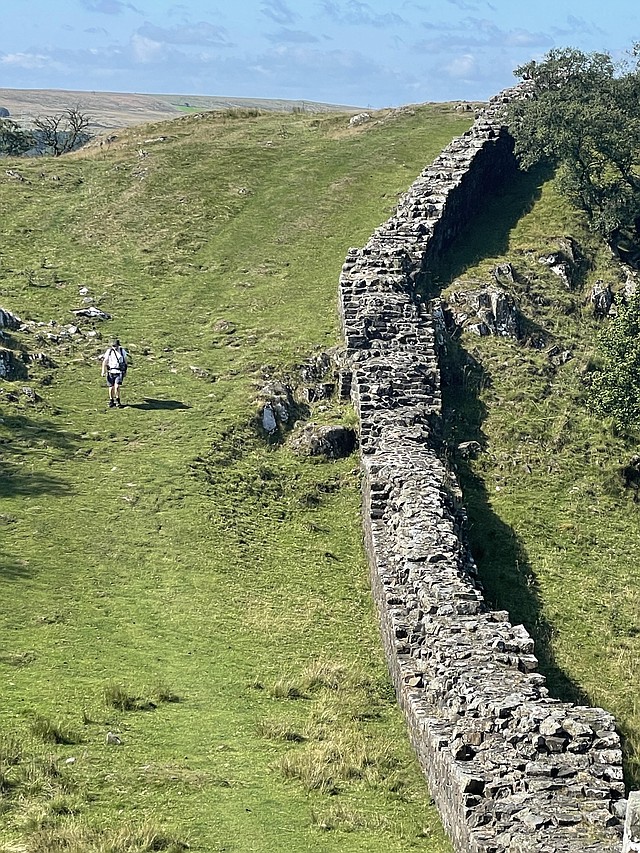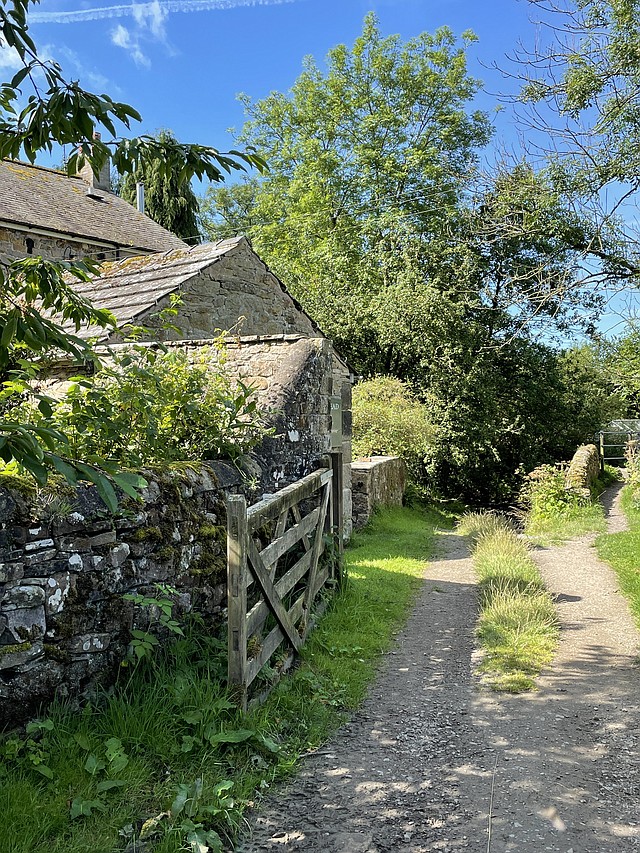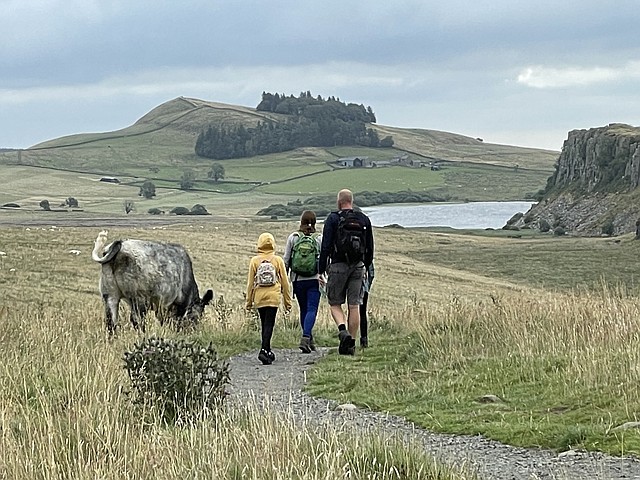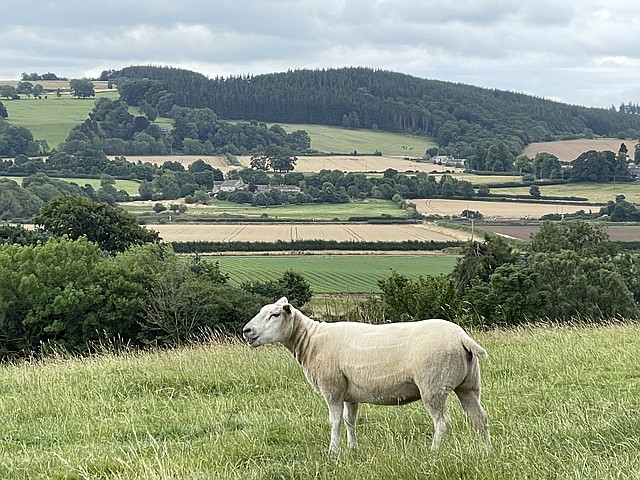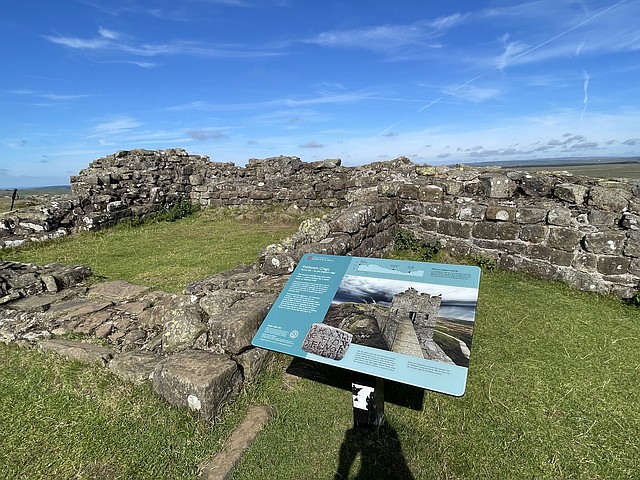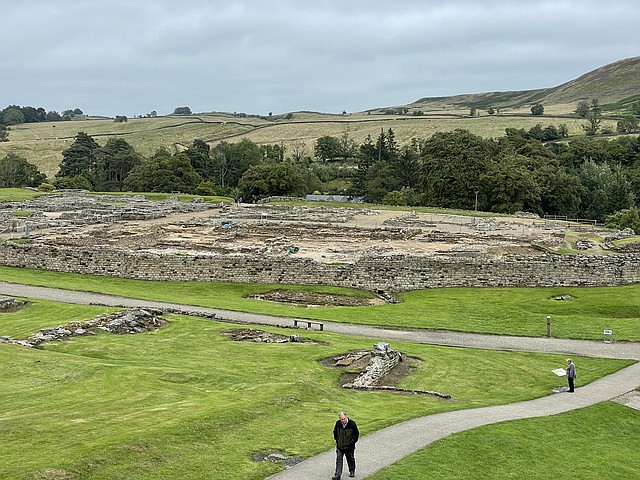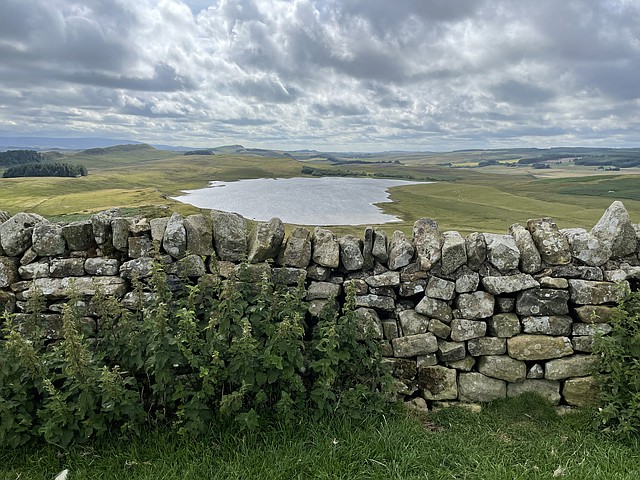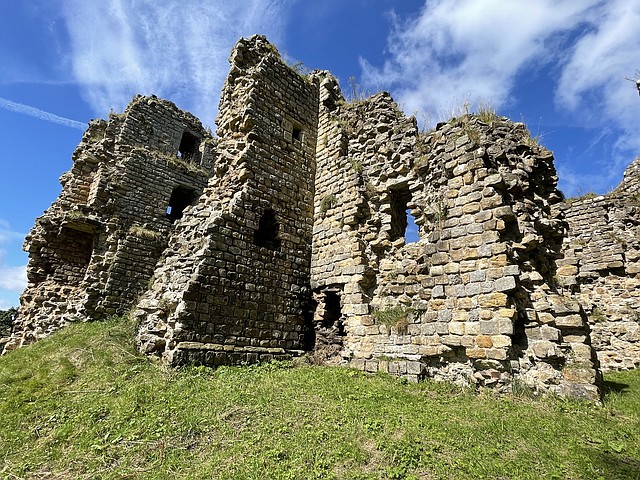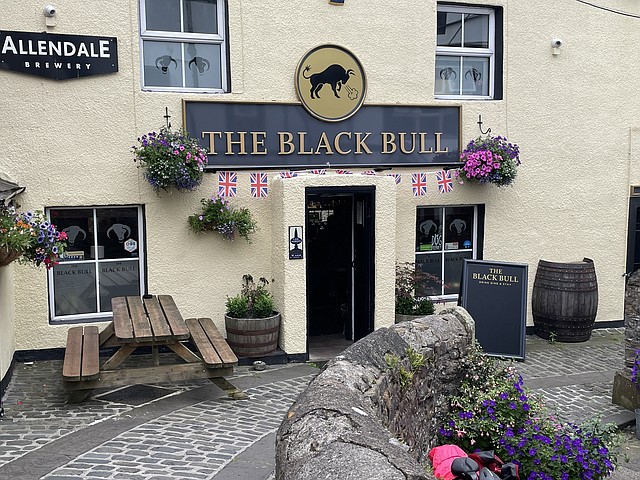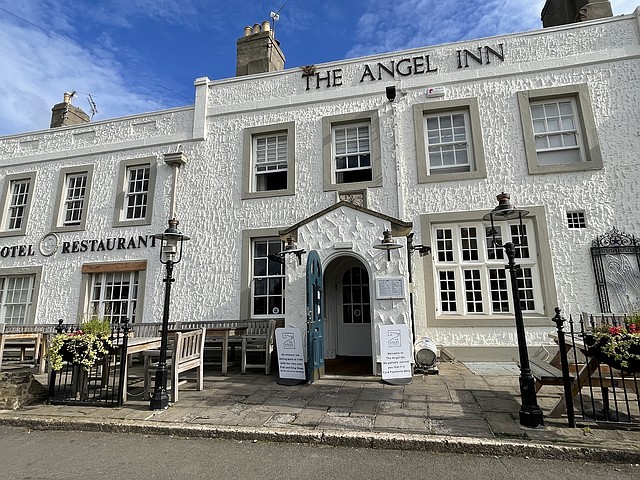Follow in the sandal steps of the Romans as you walk Hadrian’s Wall Path
Travels with Deb
January 2, 2023 at 6:00 a.m. | Updated January 2, 2023 at 6:00 a.m.
...by DEBBIE STONE
I’ve grown fond of long walks that take you from one inn to another, with picturesque scenery to admire along the way and only a daypack to carry. Several years ago, I did a portion of the Wales Coastal Path, organized by Celtic Trails, and the experience was so memorable I opted to do another one of the UK’s famed trails with the same company.
Hadrian’s Wall Path National Trail is an 84-mile-long route that was voted the nation’s favorite trek. A UNESCO World Heritage Site, the trail opened in 2003 in the border area between England and Scotland. It follows the course of northern Europe’s largest surviving Roman monument, a 2nd century fortification constructed on the orders of Emperor Hadrian in AD122. The emperor had it built to separate the manageable southern part of the island from the lawless lands to the north. It served to mark the northern limits of Hadrian’s mighty empire, an immense realm that spanned 3,000 miles across Europe and the Mediterranean all the way to the Euphrates.
For almost three centuries, the Wall was an active frontier area with around 20,000 soldiers stationed there from across the empire. It measured nearly twenty feet in height and sprawled from coast to coast, with forts, milecastles, ramparts, barracks and civil settlements dotting the route. Regarded as an extraordinary engineering feat, the Wall is testament to the ambition and vision of both Hadrian and the Roman civilization itself. Consider that it took six years for the Roman army to build the Wall, while by comparison it took ten years to create the Wall Path National Trail.
The Romans eventually left the region because its borders were being attacked from all sides and they found themselves unable to retain all their territories. They relinquished Britain to focus on their other holdings. After they withdrew, the Wall fell into disrepair because landowners used the existing stones for their own building purposes.
The full length of the trail goes from Bowness-on-Solway on the west coast to Wallsend in the east, and you can walk it from either direction. In the essence of time, husband and I completed about a 40-mile section of the route from Chester’s Fort to Irthington, where many of the highlights of the Wall are located.
There are actually only about ten miles of the Wall left and it hardly ever rises to more than half its original height. Much of the path is through the remote countryside of Northumberland National Park, which is the least populated and most isolated area of the U.K. You’ll go over moors and down dales in this undulating pastoral landscape, where the sheep and cows greatly outnumber the people. And you’ll be sharing the path with these animals, which means sidestepping mega cowpies and sheep droppings!
Following the trail is fairly easy, as its waymarking is clear most of the time. It’s denoted by the National Trail “acorn” signposts and arrows, which we were familiar with from doing the Wales Coastal Path. But you need to keep your eyes open, as in some places the marks are hidden by foliage or faded. Though this is a wild walk, once in a while the route crosses a main road or you need to actually walk on the road. And occasionally, you will be on someone’s property, right next to their house.
We encountered a few farmers in the fields and near their barns, along with a number of other walkers making tracks on the path. All were friendly and helpful. There’s an instant connection and camaraderie when you meet fellow walkers on the same journey. And people come from all over the globe for this unique experience. Some are doing it to set time records, but the majority of folks we encountered were going about it in a leisurely manner, stopping to smell the heather.
The path is regarded as moderate, however, there are some steep inclines and you’ll need a decent pair of calf muscles. I felt mine working and experienced some soreness due to the mileage. But the landscape is breathtaking and served as an ideal distraction as I plodded onward. Wide open moorlands, peat bogs, hay meadows and woodland set the stage. The moody and rugged quality of the scenery instantly put me in the pages of “Jane Eyre” and “Wuthering Heights.” That and the occasional blustery winds. It’s said that you can experience four seasons in a day in Northumberland and I can attest to the validity of this statement!
There are numerous English Heritage sites along the route brimming with Roman history. They offer walkers opportunities to experience life on the Roman frontier and to explore rich collections of artifacts and archaeological excavations.
Corbridge Roman Town, for example, possesses a world class Roman Collection in its museum, giving insight into the lives of the town’s Roman residents through the objects they left behind. It also boasts the Corbridge Hoard, one of the most significant Roman time capsules (almost 2,000 years old) ever discovered in Hadrian’s Wall Country. The well-preserved objects include the contents of a Roman workshop and many possessions from a Roman soldier, such as armor, tools, weaponry, wax writing tablets and papyrus. These artifacts were found in excellent condition because they were buried in an iron-bound, leather-covered wooden chest. You can see film footage of the actual excavation of the Hoard back in 1964, too, and then step outside to see the excavation location.
Housesteads Roman Fort is another site. Set high on an escarpment with commanding views, Housesteads is the most complete example of a Roman fort in Britain. You can wander among the barrack blocks, the commander’s house and the hospital, and peek into ancient toilets. Inside the museum is a showcase of objects once belonging to Roman soldiers and a short film that takes you on a journey back in time.
Chesters Roman Fort is the most complete Roman cavalry fort in the country, with well-preserved baths and steam room, and officers’ quarters. The museum tells the story of John Clayton, an important figure in the 19th century archaeology of the Wall. He is responsible for the present-day appearance of the site due to the excavations he conducted in 1843.
The grand dame of the sites, however, has to be Vindolanda. Excavations of a vast Roman fort and town have been going on here for over fifty years and they are still continuing today. The museum is a standout, as it houses a comprehensive collection of artifacts including the famed Vindolanda Writing Tablets and a wild assortment of Roman leather shoes!
The tablets were, at the time of their discovery, the oldest surviving handwritten documents in Britain. They are actually thin pieces of wood, which served as writing paper for those at the fort, who included Roman soldiers and officers and their wives and families, as well as merchants and enslaved people. They were written in Latin using pen and ink (over 200 pens were recovered at Vindolanda) and dealt with a number of topics from applications for leave, expense reports, supply requests and other official type missives to simple letters and greetings to friends and families, even recipes.
I was always glad to see our night’s lodgings at the end of a long day of walking, as it meant rest, a shower and a hot meal either at a nearby pub or restaurant.
Accommodations ranged from quaint and simple inns to small boutique hotels located in charming villages dotted with traditional stone cottages. We enjoyed having dinner in the neighboring pubs, as this is where the locals gather for a pint (real ales on draft!) and a Cornish pasty, or the proverbial fish and chips. The atmosphere was cozy and convivial and we were always made to feel welcome.For more information on independent walking trips in the UK and Europe:
www.celtictrailswalkingholidays.co.uk
Debbie Stone is an established travel writer and columnist, who crosses the globe in search of unique destinations and experiences to share with her readers and listeners. She’s an avid explorer who welcomes new opportunities to increase awareness and enthusiasm for places, culture, food, history, nature, outdoor adventure, wellness and more. Her travels have taken her to nearly 100 countries spanning all seven continents, and her stories appear in numerous print and digital publications.
Hadrian’s Wall Path National Trail is an 84-mile-long route that was voted the nation’s favorite trek. A UNESCO World Heritage Site, the trail opened in 2003 in the border area between England and Scotland. It follows the course of northern Europe’s largest surviving Roman monument, a 2nd century fortification constructed on the orders of Emperor Hadrian in AD122. The emperor had it built to separate the manageable southern part of the island from the lawless lands to the north. It served to mark the northern limits of Hadrian’s mighty empire, an immense realm that spanned 3,000 miles across Europe and the Mediterranean all the way to the Euphrates.
For almost three centuries, the Wall was an active frontier area with around 20,000 soldiers stationed there from across the empire. It measured nearly twenty feet in height and sprawled from coast to coast, with forts, milecastles, ramparts, barracks and civil settlements dotting the route. Regarded as an extraordinary engineering feat, the Wall is testament to the ambition and vision of both Hadrian and the Roman civilization itself. Consider that it took six years for the Roman army to build the Wall, while by comparison it took ten years to create the Wall Path National Trail.
The Romans eventually left the region because its borders were being attacked from all sides and they found themselves unable to retain all their territories. They relinquished Britain to focus on their other holdings. After they withdrew, the Wall fell into disrepair because landowners used the existing stones for their own building purposes.
The full length of the trail goes from Bowness-on-Solway on the west coast to Wallsend in the east, and you can walk it from either direction. In the essence of time, husband and I completed about a 40-mile section of the route from Chester’s Fort to Irthington, where many of the highlights of the Wall are located.
There are actually only about ten miles of the Wall left and it hardly ever rises to more than half its original height. Much of the path is through the remote countryside of Northumberland National Park, which is the least populated and most isolated area of the U.K. You’ll go over moors and down dales in this undulating pastoral landscape, where the sheep and cows greatly outnumber the people. And you’ll be sharing the path with these animals, which means sidestepping mega cowpies and sheep droppings!
Following the trail is fairly easy, as its waymarking is clear most of the time. It’s denoted by the National Trail “acorn” signposts and arrows, which we were familiar with from doing the Wales Coastal Path. But you need to keep your eyes open, as in some places the marks are hidden by foliage or faded. Though this is a wild walk, once in a while the route crosses a main road or you need to actually walk on the road. And occasionally, you will be on someone’s property, right next to their house.
We encountered a few farmers in the fields and near their barns, along with a number of other walkers making tracks on the path. All were friendly and helpful. There’s an instant connection and camaraderie when you meet fellow walkers on the same journey. And people come from all over the globe for this unique experience. Some are doing it to set time records, but the majority of folks we encountered were going about it in a leisurely manner, stopping to smell the heather.
The path is regarded as moderate, however, there are some steep inclines and you’ll need a decent pair of calf muscles. I felt mine working and experienced some soreness due to the mileage. But the landscape is breathtaking and served as an ideal distraction as I plodded onward. Wide open moorlands, peat bogs, hay meadows and woodland set the stage. The moody and rugged quality of the scenery instantly put me in the pages of “Jane Eyre” and “Wuthering Heights.” That and the occasional blustery winds. It’s said that you can experience four seasons in a day in Northumberland and I can attest to the validity of this statement!
There are numerous English Heritage sites along the route brimming with Roman history. They offer walkers opportunities to experience life on the Roman frontier and to explore rich collections of artifacts and archaeological excavations.
Corbridge Roman Town, for example, possesses a world class Roman Collection in its museum, giving insight into the lives of the town’s Roman residents through the objects they left behind. It also boasts the Corbridge Hoard, one of the most significant Roman time capsules (almost 2,000 years old) ever discovered in Hadrian’s Wall Country. The well-preserved objects include the contents of a Roman workshop and many possessions from a Roman soldier, such as armor, tools, weaponry, wax writing tablets and papyrus. These artifacts were found in excellent condition because they were buried in an iron-bound, leather-covered wooden chest. You can see film footage of the actual excavation of the Hoard back in 1964, too, and then step outside to see the excavation location.
Housesteads Roman Fort is another site. Set high on an escarpment with commanding views, Housesteads is the most complete example of a Roman fort in Britain. You can wander among the barrack blocks, the commander’s house and the hospital, and peek into ancient toilets. Inside the museum is a showcase of objects once belonging to Roman soldiers and a short film that takes you on a journey back in time.
Chesters Roman Fort is the most complete Roman cavalry fort in the country, with well-preserved baths and steam room, and officers’ quarters. The museum tells the story of John Clayton, an important figure in the 19th century archaeology of the Wall. He is responsible for the present-day appearance of the site due to the excavations he conducted in 1843.
The grand dame of the sites, however, has to be Vindolanda. Excavations of a vast Roman fort and town have been going on here for over fifty years and they are still continuing today. The museum is a standout, as it houses a comprehensive collection of artifacts including the famed Vindolanda Writing Tablets and a wild assortment of Roman leather shoes!
The tablets were, at the time of their discovery, the oldest surviving handwritten documents in Britain. They are actually thin pieces of wood, which served as writing paper for those at the fort, who included Roman soldiers and officers and their wives and families, as well as merchants and enslaved people. They were written in Latin using pen and ink (over 200 pens were recovered at Vindolanda) and dealt with a number of topics from applications for leave, expense reports, supply requests and other official type missives to simple letters and greetings to friends and families, even recipes.
I was always glad to see our night’s lodgings at the end of a long day of walking, as it meant rest, a shower and a hot meal either at a nearby pub or restaurant.
Accommodations ranged from quaint and simple inns to small boutique hotels located in charming villages dotted with traditional stone cottages. We enjoyed having dinner in the neighboring pubs, as this is where the locals gather for a pint (real ales on draft!) and a Cornish pasty, or the proverbial fish and chips. The atmosphere was cozy and convivial and we were always made to feel welcome.For more information on independent walking trips in the UK and Europe:
www.celtictrailswalkingholidays.co.uk
Debbie Stone is an established travel writer and columnist, who crosses the globe in search of unique destinations and experiences to share with her readers and listeners. She’s an avid explorer who welcomes new opportunities to increase awareness and enthusiasm for places, culture, food, history, nature, outdoor adventure, wellness and more. Her travels have taken her to nearly 100 countries spanning all seven continents, and her stories appear in numerous print and digital publications.

